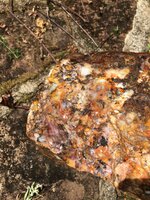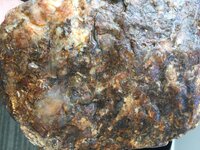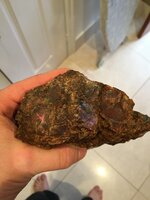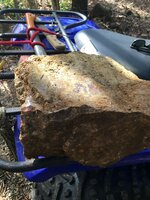I had a landslide at my farm and in the mud were hundreds of these boulders, some weight up to 220pounds. They look like some sort of agate but I'm not sure.
The pictures are from the pieces I could carry out of the mud.
Some look like they have high iron content while others seem to have an Opal like sheen.
Any ideas?
The pictures are from the pieces I could carry out of the mud.
Some look like they have high iron content while others seem to have an Opal like sheen.
Any ideas?






 Welcome aboard to TNET!
Welcome aboard to TNET!
